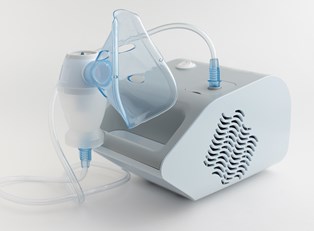Albuterol is a drug that is often taken to relieve symptoms of breathlessness. Though it may be administered as an IV injection, an oral liquid, or a pill, albuterol is typically inhaled into the lungs via an inhaler or nebulizer device. Albuterol is most commonly taken as a rescue or quick-relief emergency medication by patients with asthma or other respiratory conditions.
Albuterol and Asthma
According to the American Thoracic Society (ATS), albuterol is a beta-agonist, which means it mainly affects the smooth muscles. When taken via inhaler or nebulizer, albuterol affects the muscles surrounding the bronchi and the bronchioles. Bronchi and bronchioles are the tubes that branch out throughout your lungs. Bronchi are your larger airways in the upper portions of your lungs and bronchioles are your smaller airways in your lower lung regions. Albuterol relaxes the muscles that line and surround these airways. By calming these muscles, the drug helps to open up your airways and make them bigger. For this reason, it is also called a bronchodilator.
For a minute, think of your airways as being like a water hose. During acute asthma attacks, the squeezing and tightening on the outside of the hose, your bronchi and bronchioles, makes the channel, through which air can move in and out, smaller. Additionally, inflammation that occurs on the inside of the hose makes the diameter even smaller yet. Albuterol helps address the constriction so that you can move air more effectively.
Albuterol and Mucous
Another problem that albuterol addresses is an increased amount of mucous that can line the walls of the hose and shrink your airway even more. This buildup is commonly associated with cystic fibrosis, chronic bronchitis, and even short-term respiratory infections such as pneumonia. There are cilia, hairlike-structures within your airways, which function in unison much like arms that wave and fan up and down. They work to move mucous up and out of the lungs, but sometimes there is so much mucous that the cilia become paralyzed. Albuterol promotes the movement of your cilia and the clearance of mucous. As a result, the diameter of the airways is enlarged.
Albuterol is a short-acting beta-agonist, which means it works within three-to-five minutes, but can last as long as four-to-six hours. When inhaled with an inhaler or nebulizer, fewer side effects are noticed than when taken orally or intravenously. The most common side effects experienced by albuterol include:
- increased heart rate
- tremors (shakiness), especially in the limbs
- nervous feeling
- heart flutters
- hyperactivity


